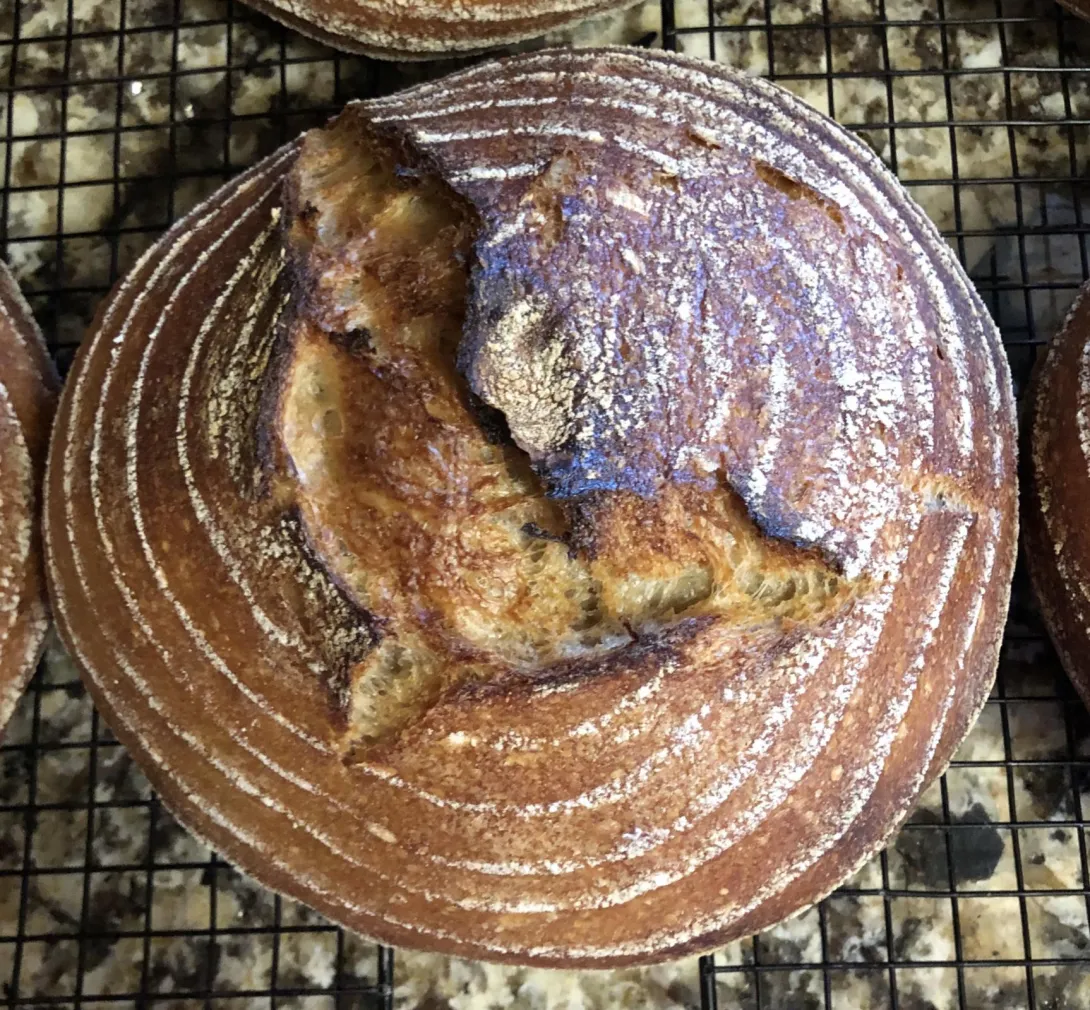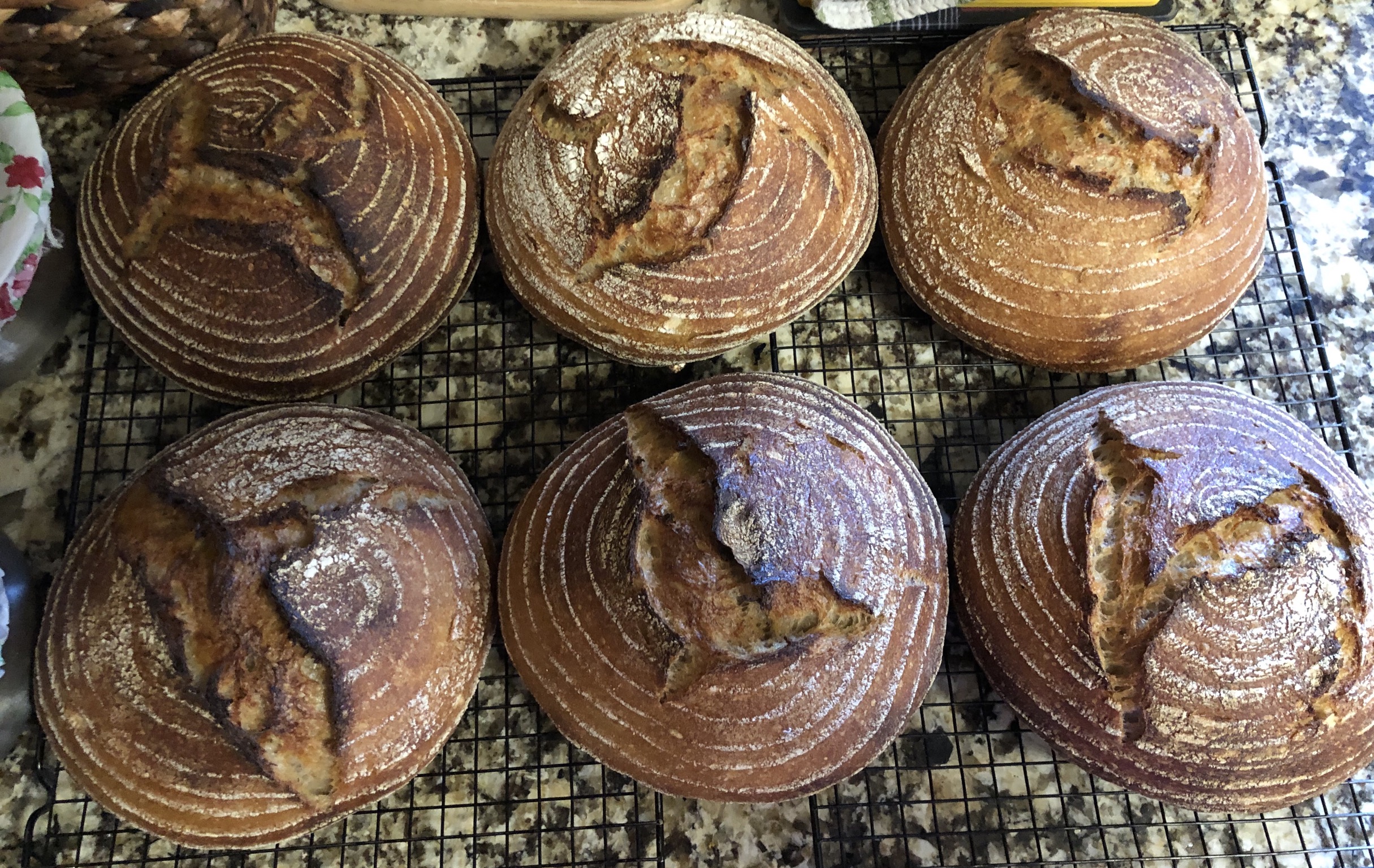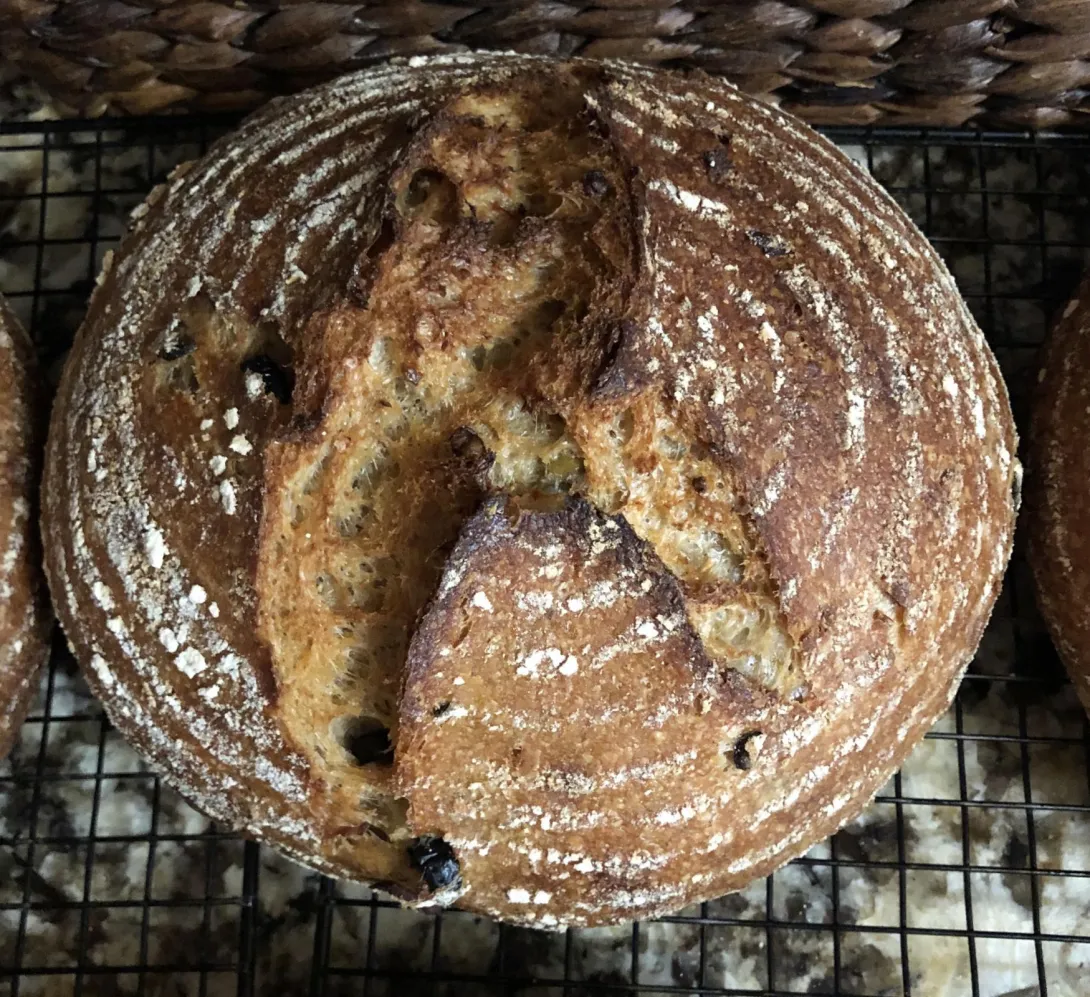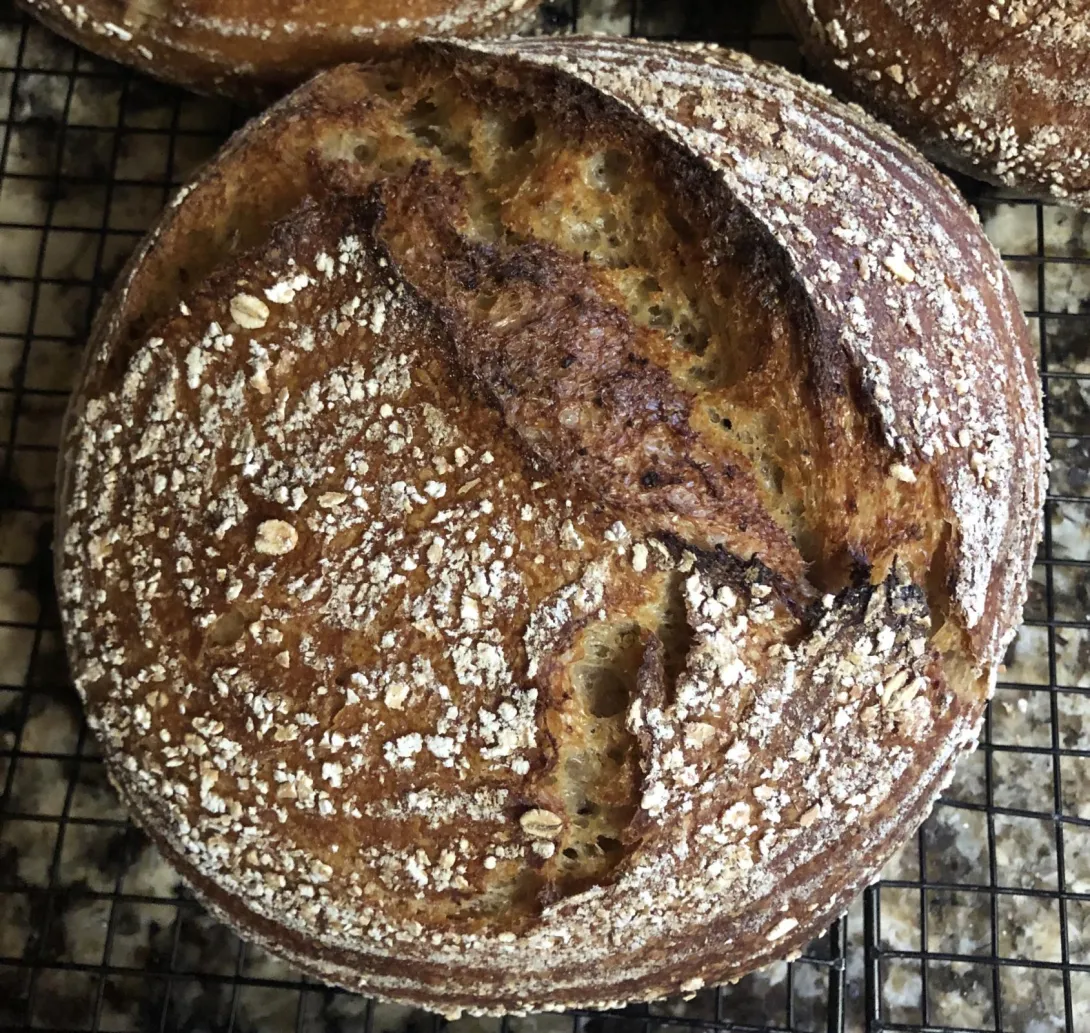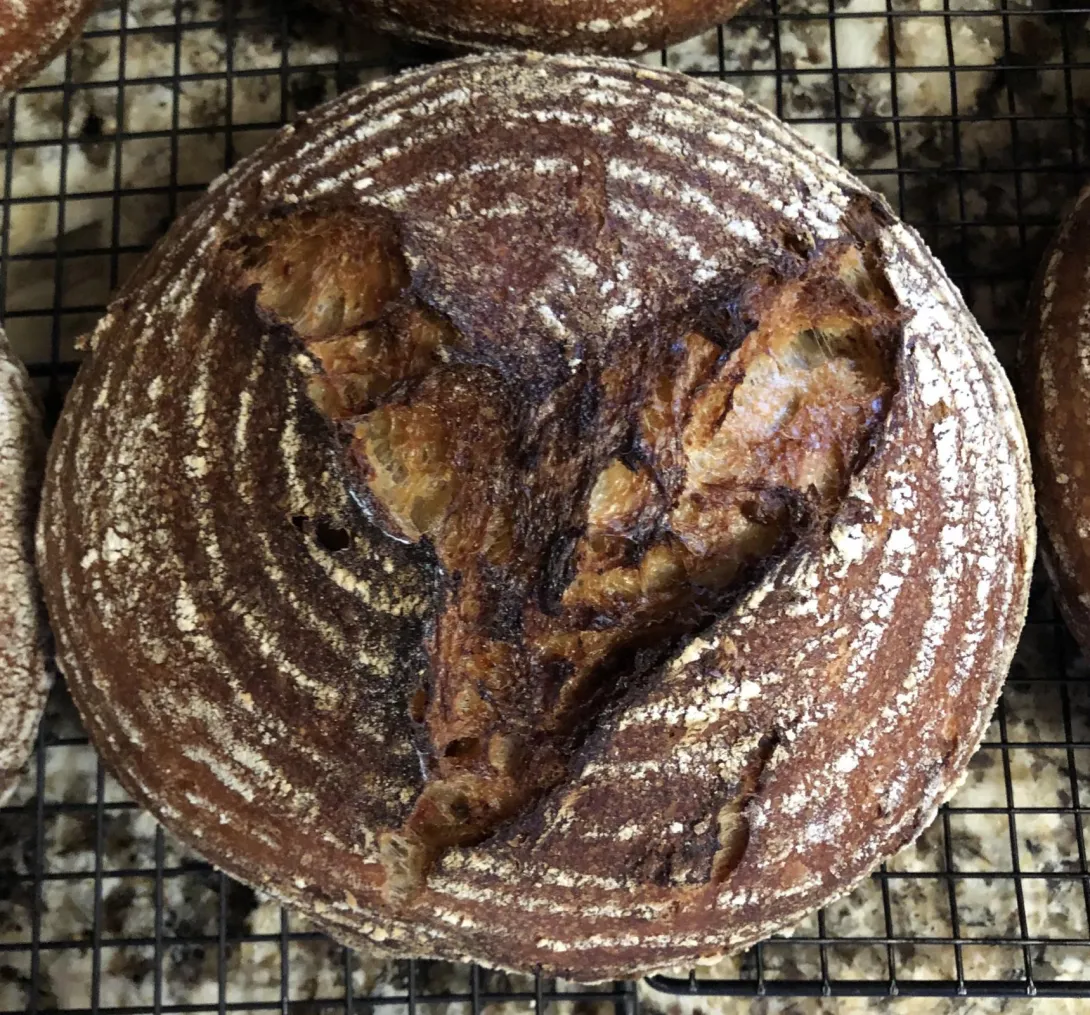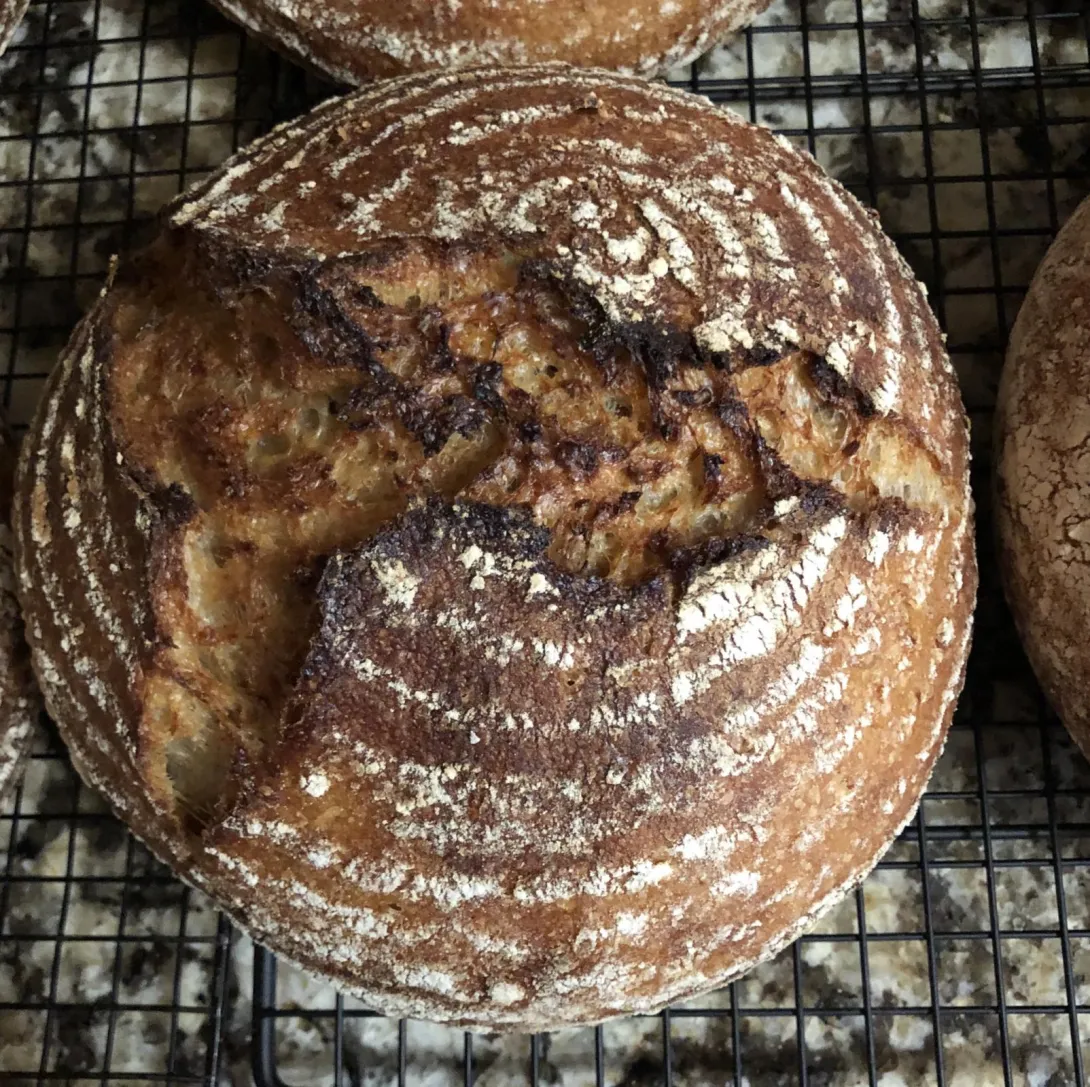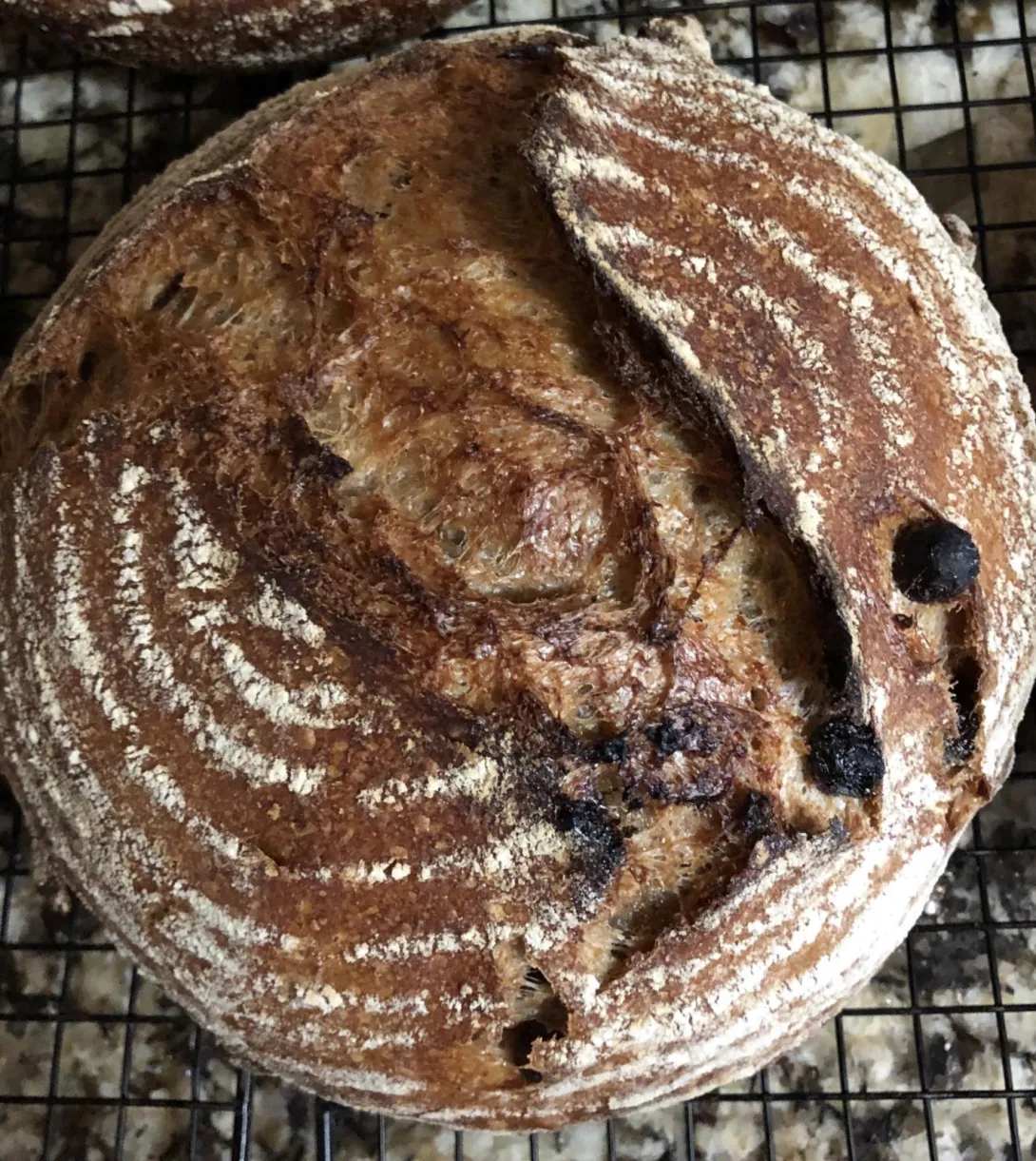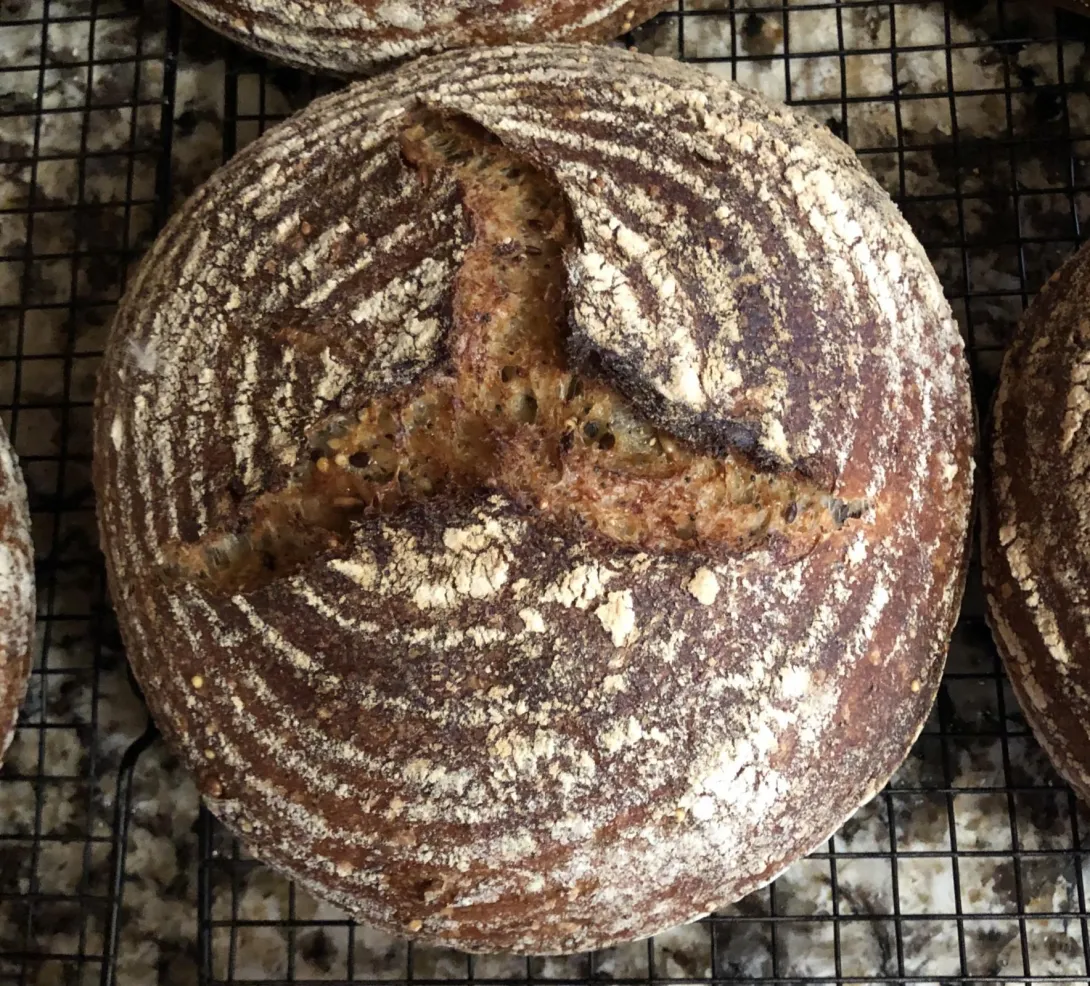Seeds, Seeds, Seeds Sourdough (revisited)
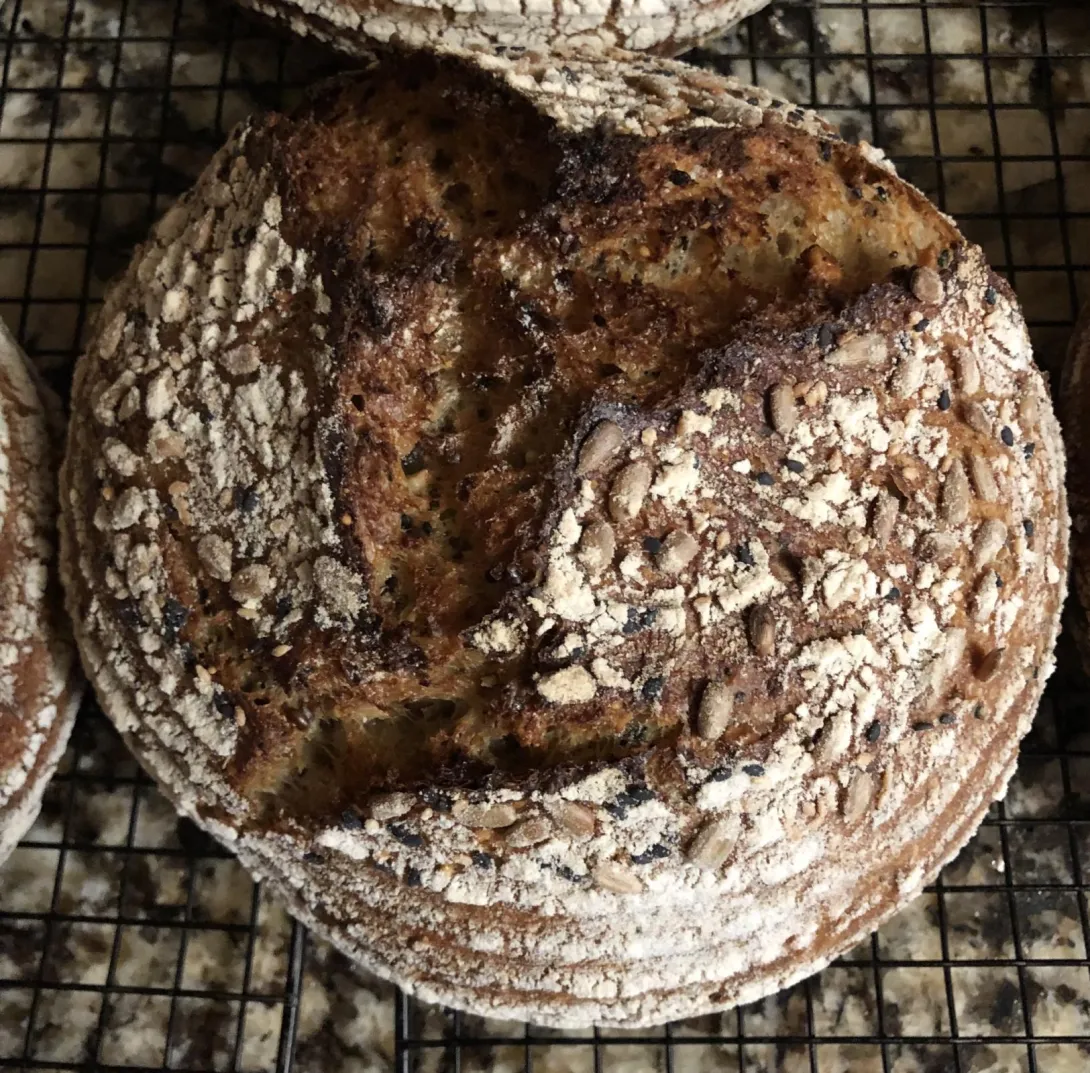
It was time to throw some seeds into some bread again. I checked out my previous methods on adding seeds and decided to go with a dry seed addition rather than using a soaker. It seems that I got a more open crumb doing this rather than doing the soaker. Hopefully, this holds true.
Recipe
Makes 3 loaves
Seed Add-ins
70 g Sunflower seeds
50 g Sesame seeds (I used half black and half white)
50 g freshly ground flax seeds
30 g Amaranth seeds
30 g Buckwheat groats
15 g Millet seeds
